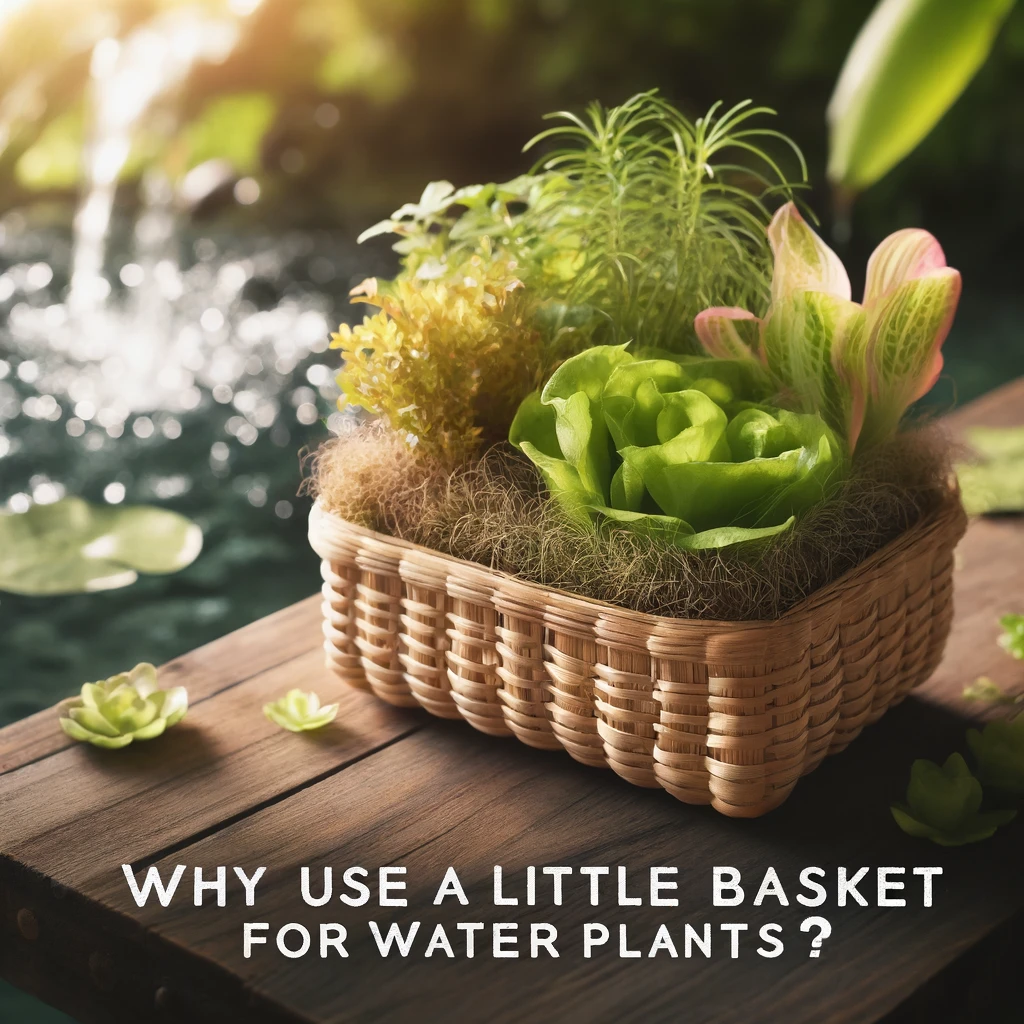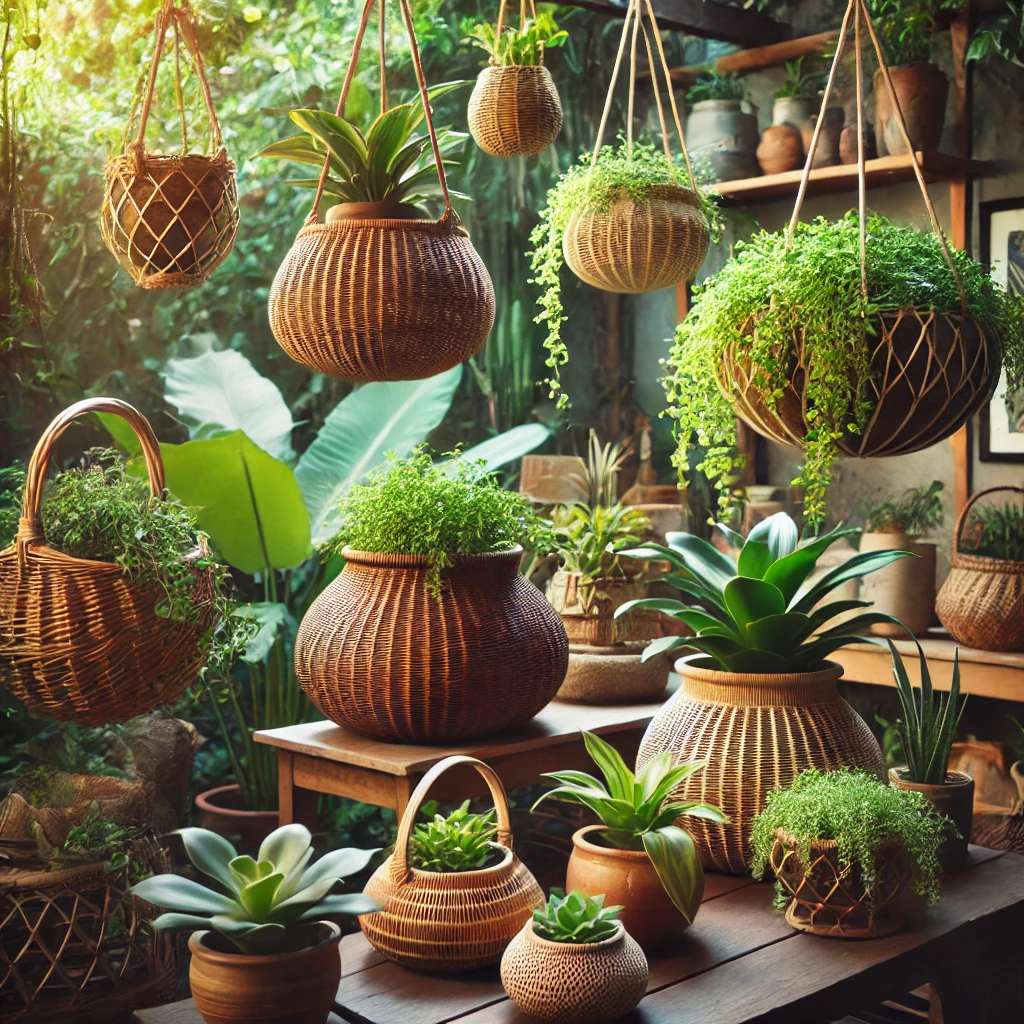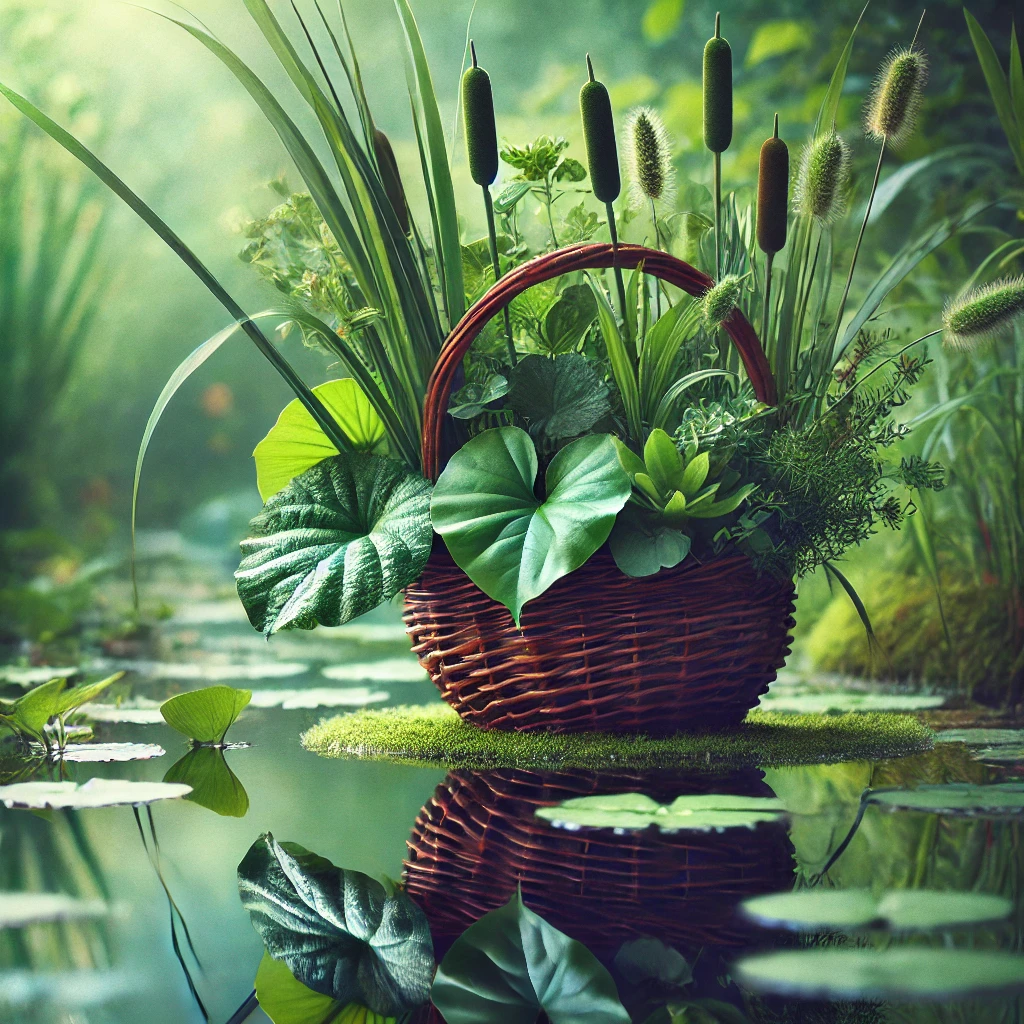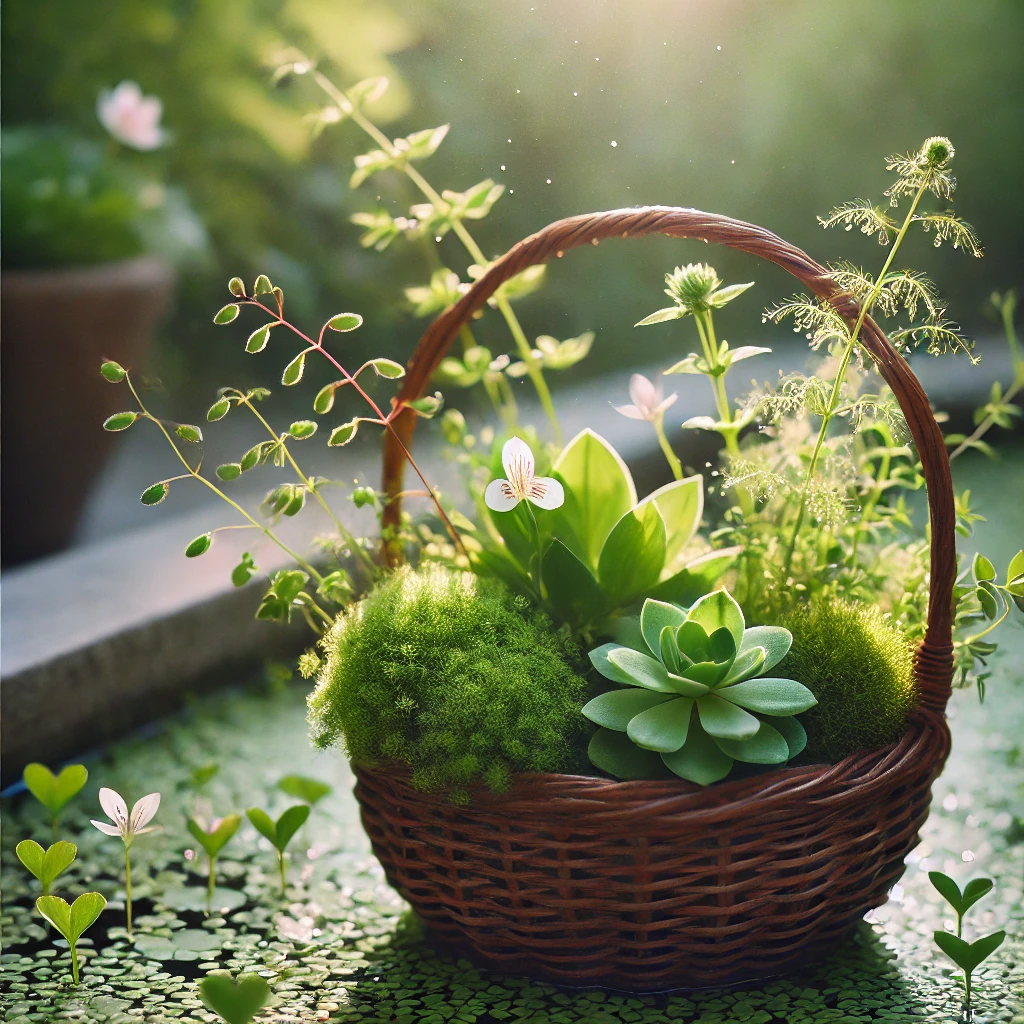While water plants thrive in their natural environments, using a little basket offers several distinct advantages:
- Control of Plant Growth: Water plants can be prolific growers, sometimes taking over a pond or container. A basket helps contain their growth, preventing them from becoming invasive and ensuring a balanced aquatic ecosystem.
- Easy Maintenance: When planted in baskets, water plants become more manageable. You can easily lift them out for trimming, cleaning, or replanting, without disturbing the entire water body.
- Mobility: Baskets allow you to move your water plants around, enhancing the design of your pond or water garden. You can easily rearrange your aquatic display to create different looks and visual interest.
- Protection for Delicate Plants: Some water plants have delicate roots susceptible to damage from fish or other animals. A basket provides a safe haven for these delicate species, shielding them from potential harm.

People Also Read: Are Wintergreen Plants in Alaska Edible? Discover the Truth
Choosing the Right Basket
Selecting the right basket is crucial for successful water plant cultivation. Here are key factors to consider:
- Size: Choose a basket large enough to accommodate the plant’s roots but small enough to keep it contained. Little baskets are perfect for small to medium-sized water plants.
- Material: Plastic baskets are a popular choice due to their durability and resistance to water degradation. However, wire mesh baskets or biodegradable baskets are also viable options depending on your preference and needs.
- Drainage: Ensure the basket has ample drainage holes to allow water to flow through freely. This ensures the roots have constant access to water and nutrients.

How to Plant Water Plants in a Little Basket
Planting water plants in a little basket is a straightforward process. Follow these steps for successful planting:
Step 1: Prepare the Basket
- Line the basket with a piece of burlap or landscape fabric. This prevents soil or planting medium from escaping through the drainage holes.
- Place a layer of aquatic planting soil or a mixture of clay and sand at the bottom of the basket. Avoid using regular garden soil, as it can float and muddy the water.
Step 2: Prepare the Plant
- Carefully remove the water plant from its original container. Be gentle to avoid damaging the roots.
- Trim any dead or damaged roots with clean, sharp scissors. This promotes healthy growth and reduces the risk of rot.
Step 3: Plant the Water Plant
- Position the plant in the center of the basket, ensuring the roots are spread out evenly over the soil.
- Add more soil around the roots, filling the basket to just below the rim. Gently press the soil down to remove any air pockets.
- If you are using gravel, add a layer on top of the soil. This helps keep the soil in place and discourages fish from digging into it.
Step 4: Submerge the Basket
- Slowly lower the basket into the water, allowing it to fill with water gradually to avoid disturbing the soil.
- Place the basket in your pond, water garden, or container. Ensure the plant is at the correct depth for its species. Some water plants prefer shallow water, while others need to be fully submerged.
Caring for Water Plants in a Basket
Caring for water plants in baskets is relatively easy, but there are a few key practices to keep them thriving:
- Watering: If the plant is in a pond or water garden, it will naturally receive the water it needs. For indoor water plants, top up the water regularly to keep the roots submerged.
- Feeding: Use a slow-release fertilizer designed for aquatic plants. Place fertilizer tablets in the soil, not directly in the water, to avoid algae growth.
- Pruning: Regularly trim any dead or dying leaves. This maintains plant health and prevents decay, which can pollute the water.
- Cleaning: If algae or debris accumulate in the basket, remove the plant and rinse the basket under clean water. This ensures a clean and healthy environment for your aquatic plants.

Best Water Plants for Little Baskets
Not all water plants are suitable for little baskets. Here are some of the best options for small to medium-sized baskets:
- Water Lilies: These popular plants are prized for their beautiful, floating flowers. Dwarf varieties are ideal for small baskets.
- Anubias: A hardy plant that thrives in low light, making it a great choice for beginners.
- Hornwort: A fast-growing plant that helps control algae by absorbing excess nutrients.
- Pygmy Water Lily: A smaller version of the classic water lily, perfect for tiny baskets.
- Floating Fern: This plant floats on the water’s surface, making it easy to grow in a basket.

Common Problems and Solutions
While planting water plants in baskets is generally trouble-free, you may encounter a few issues. Here are some common problems and their solutions:
- Algae Growth: Excess light and nutrients can lead to algae growth. To prevent this, place the basket in a shaded area and avoid over-fertilizing.
- Root Rot: If roots stay too wet or the water becomes stagnant, root rot can occur. Ensure good water circulation and avoid overwatering.
- Pests: Fish may nibble on plants, or insects might infest them. Remove the basket, inspect the plant, and remove any pests by hand or use a natural insecticide if necessary.
Conclusion
Planting water plants in little baskets offers a practical and visually appealing way to enjoy these aquatic gems. Whether you have a pond, water garden, or indoor water feature, baskets provide a manageable way to display and care for your plants. With the right care and maintenance, your water plants will flourish, adding a touch of nature’s beauty to your space.
FAQs
What kind of soil do I use for water plants in baskets?
Use aquatic planting soil or a mixture of clay and sand. Avoid regular garden soil as it can float and muddy the water.
How often should I fertilize water plants in baskets?
Use slow-release fertilizer designed for aquatic plants. Apply it every few months, depending on the specific fertilizer instructions and the plant’s growth rate.
Can I use any type of basket for water plants?
While plastic baskets are commonly used, wire mesh and biodegradable baskets are also options. Choose a basket with good drainage and the right size for your plants.
What are the best water plants for beginners?
Anubias and hornwort are excellent choices for beginners due to their hardiness and ability to thrive in a range of conditions.
How do I prevent algae growth in my water plant basket?
Place the basket in a shaded area to reduce light exposure, and avoid over-fertilizing. Water changes and cleaning the basket regularly also help.
What if my water plant basket gets too crowded?
If the basket becomes overcrowded, carefully remove the plant, divide it, and replant the divisions in separate baskets. This helps ensure healthy growth.
How often should I clean the basket?
Clean the basket every few months or whenever you notice algae or debris buildup.
Can I use a little basket for all water plants?
No, some water plants require larger containers or specific conditions. Choose a basket that’s appropriate for the plant’s size and growth habits.
What should I do if my water plant basket is getting too heavy?
If the basket becomes too heavy, consider using a lighter material or a smaller basket. You can also remove some of the soil and replant the plant in a fresh basket.
How do I know if my water plant is healthy?
A healthy water plant will have vibrant leaves and a strong root system. Watch for any signs of disease, pests, or decay.
